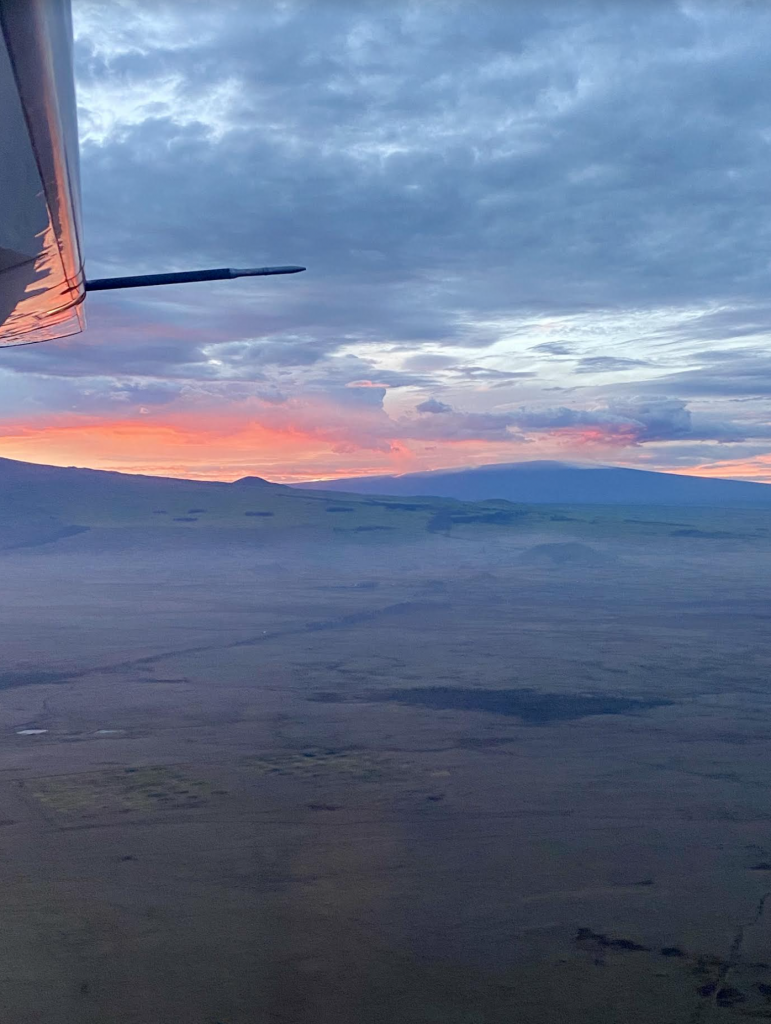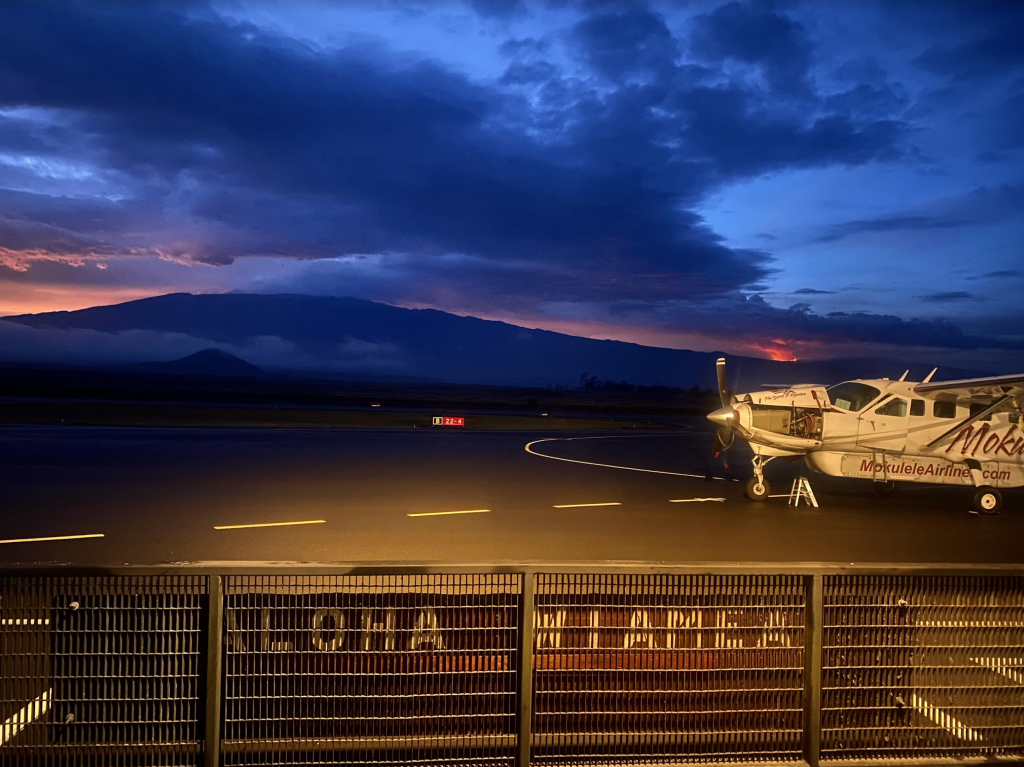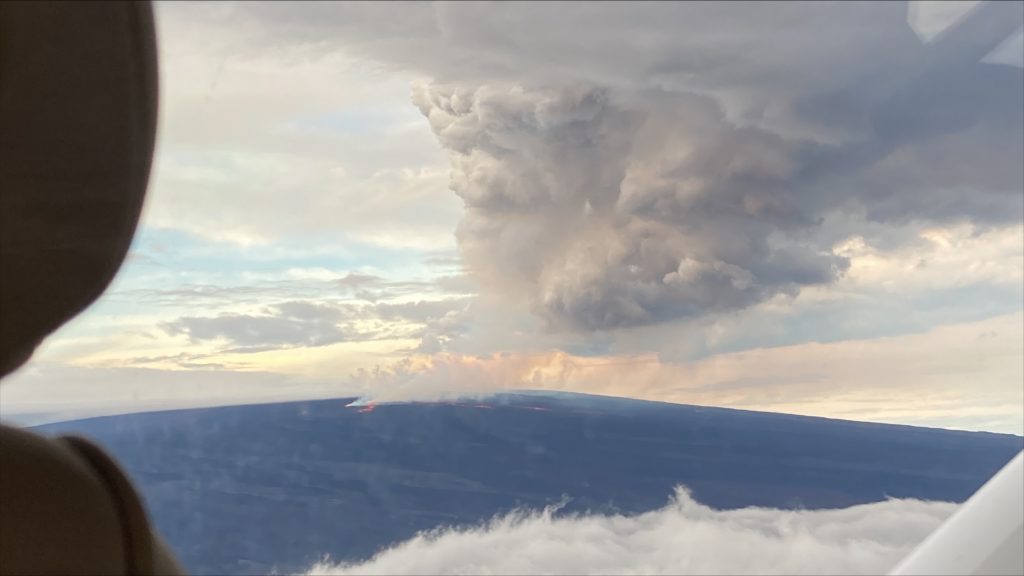Overflight at Mauna Loa shows migration of lava from summit into the Northeast Rift Zone
Editorʻs Note: This story has been updated with new information at 7:30 a.m. on Monday.
Ken Hon, Scientist-in-Charge of the Hawaiian Volcano Observatory, said during a 4:15 a.m. news conference on Monday that it was too early to tell if the Mauna Loa eruption — its first in 38 years — would remain at the summit of the 13,681-foot volcano or move down one of the rift zones.
But about 2 1/2 hours later, the volcano provided an answer.

The first flight over the volcano was conducted at about 6:30 a.m. on Monday and it confirmed that the eruption of Mauna Loa has migrated from the summit to the Northeast Rift Zone, where fissures at high elevations within Hawai‘i Volcanoes National Park are feeding several lava flows.
These lava flows are not threatening any downslope communities and all indications are that the eruption will remain in the Northeast Rift Zone. Volcanic gas and possibly fine ash and Pele’s Hair may be carried downwind, according to the observatory.
Residents at risk from Mauna Loa lava flows should review their preparedness and refer to Hawai‘i County Civil Defense information for further guidance.
The eruption began in Moku‘āweoweo, the summit caldera of the volcano, at about 11:30 p.m. Sunday. Based on past events, the early stages of a Mauna Loa rift zone eruption can be very dynamic, and the location and advance of lava flows can change rapidly.
In 1984, Hon said the eruption that ended up going down the northeast zone first moved about a kilometer into the southwest zone. It reversed and moved down the northeast zone.
“This is why we don’t want to second guess the volcano,” Hon said. “We have to let it actually show us what it is going to do and then inform people ASAP.”
That is especially the case for people who live on the steep slopes of Mauna Loa.
This is especially true for people living on the steep slopes of Mauna Loa. In 1950, lava went down the Southwest Rift Zone, making it to the ocean within three hours.
The eruption began around 11:30 p.m. Sunday but flights could not be conducted in the dark.
People should be prepared but not panic.
“Any Mauna Loa eruption is something to be concerned with,” Hon said. “We are on the world’s largest active volcano. All we can do is track what is going on and get information out to people as quickly as possible.”
Mayor Mitch Roth said in the news conference Hawai’i County is prepared and now is “not a time to be alarmed.”
Hawaiʻi County has activated its Emergency Operations Center. It is working with the Hawai‘i County Civil Defense, the Hawaiian Volcano Observatory, the Hawai’i State Emergency Managment Agency and others to respond as dictated by the volcano’s actions.
At this time there are no evacuations, although two emergency shelters have been opened as a precaution at Old Kona Airport in Kailua-Kona and Kaʻū Gymnasium in Pāhala.
Schools are scheduled to be open as usual today. Officials said tourists should not be greatly impacted by the eruption, even if it moves down a rift, it still would only occupy a small area of the Big Island.
Talmadge Magno, Civil Defense Administrator, said, “If the volcano gets to the point of starting to threaten communities, we’ll do announcements and follow up with plans we have taken to the communities.”
Since September, when there began increased seismic activity around Mauna Loa, there has been ramped up preparedness by the county and community meetings to inform the public.
“We were way overdue for a Mauna Loa eruption,” Magno said. “We are prepared.”



















